Scanning the ground a few feet in front of me—rock, root, gravel, brush, mud—anticipating the next steps. Feeling my breath. Glancing at my watch and calculating the time until I get to eat my next Fig Newton bar. My eyes are down, not gazing into the trees, the setting horizon, or watching the birds gliding through the cloudless sky. Not looking for cues to the wandering trail… this is of course, until I am lost. Looking out for trail markers is not always the easiest task, especially if you are imagining yourself running through the woods like a swift and graceful gazelle. Just me?
New and experienced trail runners, hikers, and outdoor enthusiasts alike have all come across trail markers. Some are obvious: the name of the trail, color-coded, or maybe even an arrow pointing the way. (Lucky you!) Some are not so obvious: maybe just a little neon-colored piece of plastic dangling from a twig in the breeze and as you pass it, you wonder… “hmm, was I supposed to turn there?” Trail markers can look many different ways. Some are harder than others to find or even realize that what you are looking at is actually a trail marker. So, let’s talk about trail markers, pathfinders, way makers — on the trails and off.
Hiking and trail running for many years, in many different states, I’ve come across a lot of different styles of trail markers. Here are a few:
Posted Signs:
These are often color-coded, easy-to-read placards placed about eye level, on a standalone post or nailed to a tree. The creme-de-la-creme of trail markers. They are frequently found in popular hiking spots and trails that are well maintained and well-financed. These signs are fairly straightforward and typically don’t cause much confusion, even for the most novice hiker or runner.
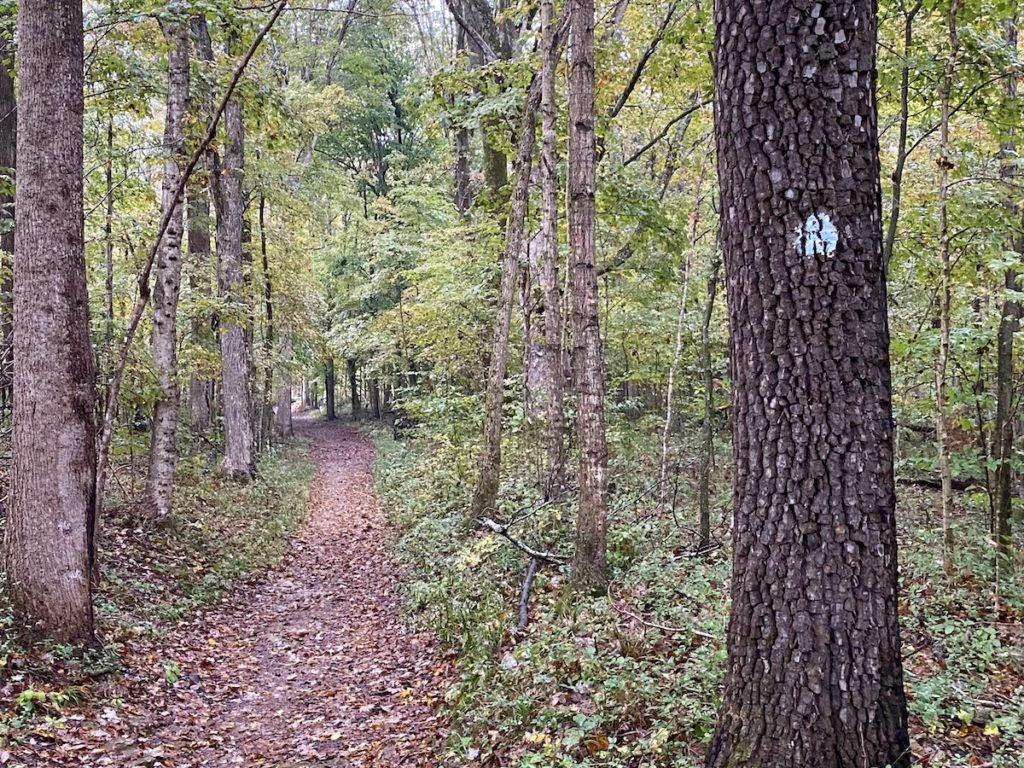
Paint Blazes:
A “blaze” is another name you’ll hear for a trail marker. This style is also common and you can see many in state and national parks. “Paint blazes” tend to be on trees or standalone posts. They are typically a bit higher up then eye level, about 6 to 8 feet from the ground. Instead of being at the crossroads of a diverging trail, blazes tend to be spaced out continuously along a path that may be more wooded or less maintained, showing you the right way, even if it looks like you might be a little lost. Sometimes these markers are used when multiple trail systems connect and break off at various points. For instance, if you have been following the red trail and now it is both a red and a blue trail, don’t worry Sis, just keep following your color.
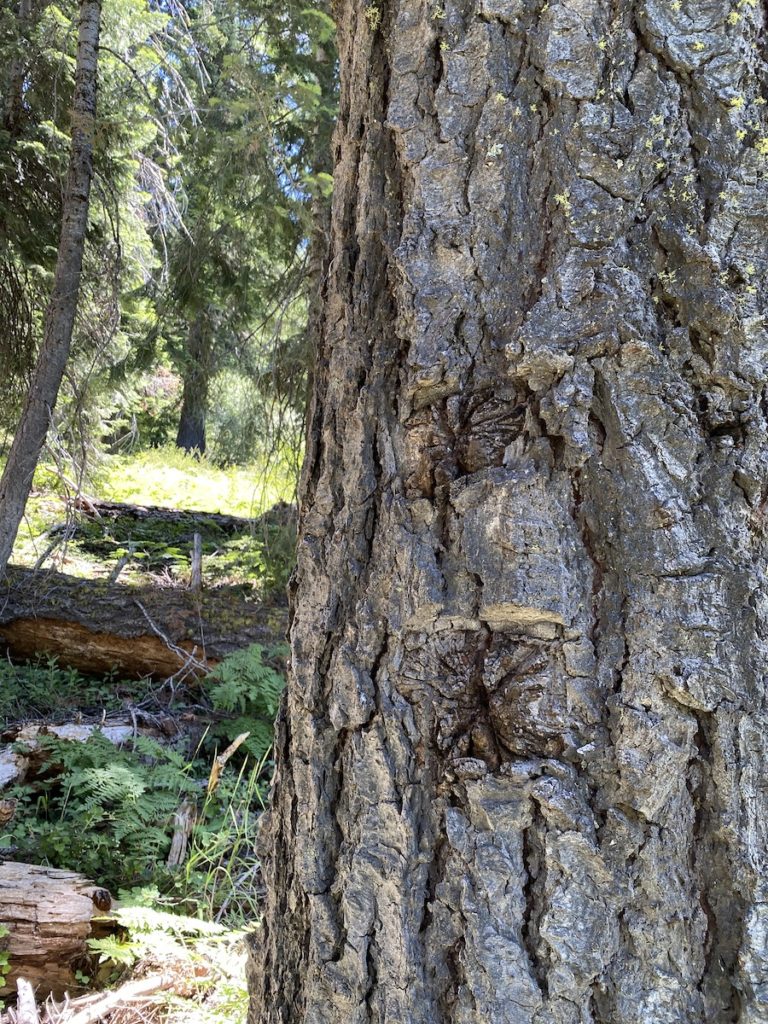
Cut-Ins or Etchings:
This is my favorite kind of trail marker. It is not as common as the previous two and is much more elusive to the eye, unless you’re looking out for it. Etchings often appear as multiple cuts into the wood of a tree, typically above eye level, resembling a small square above a larger rectangle. My Great Uncle taught me how to look for them, having worked decades of his life in the U.S. Forest Service as a Trail Packer (i.e. a trail maker) and a “fire jumper.”
We were in Northern California hiking one day with our dogs, when in his gruff but thoughtful voice he hollers,, “Rach, do ya’ know what this is?”
“Uhh, a trail marker,” I respond hesitantly because I’m already confident I’m likely wrong.
“Yeah, it’s a trail marker,” he replies, “but do you know what it is? Why it looks this way?”
“Umm, no. Why?,” admitting my awkward guilt of ignorance.
“It’s a candle!” he states, as though it is the most obvious thing ever. As he points, he says, “See the stick of the candle here and the flame? It’s here to light your way.”
This man does not get sentimental. Though he intuitively comprehends the vast beauty in nature, he would never admit it in such terms; he is no poet. However, the symbolism is not lost on me. I have appreciated that moment ever since that day. A gratitude for the woods, for nature, and for being outside more often than ever, has truly lit my way back — to the home of myself.
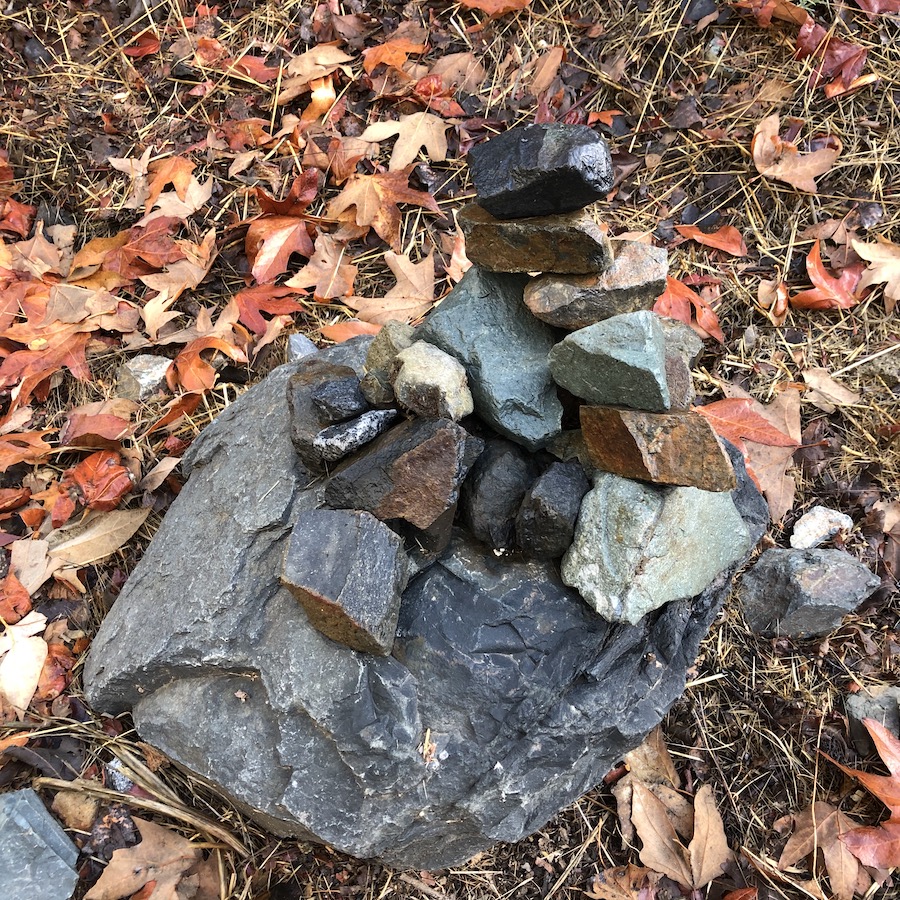
Natural and DIY Waypoints:
Sometimes you don’t get fancy color-coded trail posts or existential candles to light your way and you gotta wing it. Picture this: you begin down this gorgeously wooded trail and you realize there is a crossroad (or god forbid, multiple crossroads). There are no markers. You know you have got to come back this way eventually. So you stand there — what to do? Well, you have two options.
Option one: look around. Do you notice a funny looking cactus with a single purple flower? Maybe next to you, there is some beautiful rust- and sage-colored moss growing on a split stone? Is there anything along the way that you would remember if you saw it again? If not,
Option two: the “D.I.Y.,” make your own waypoint. A “waypoint” is just a fancy navigational term for one or more specific points (or locations) that help you navigate (move to or from) a set destination or home base. Can you stack three or four rocks on each other on the side of the trail? Maybe pile up a few twigs, all pointing towards your path to follow? If you are going the do-it-yourself waypoint route, make sure to take note of a few things.
First, make it noticeable. It really defeats the purpose if your waypoint is so small or not obvious that you blow right past it (and add about 9 miles onto your run because now, you are lost). Secondly, make sure it won’t be easily blown over by the wind, covered in snow, or disrupted by another hiker, animal, or yeti (read here: leaves—not a good material to use for trail markers). Lastly, do your best to abide by the ‘Leave No Trace’ lifestyle and try not to disrupt the natural habitat. And please, please don’t pull a big ass boulder or a decaying log into the path where another runner, mountain biker, or likely yourself is gonna be cursing your name when y’all eat it and fall. Thanks in advance.
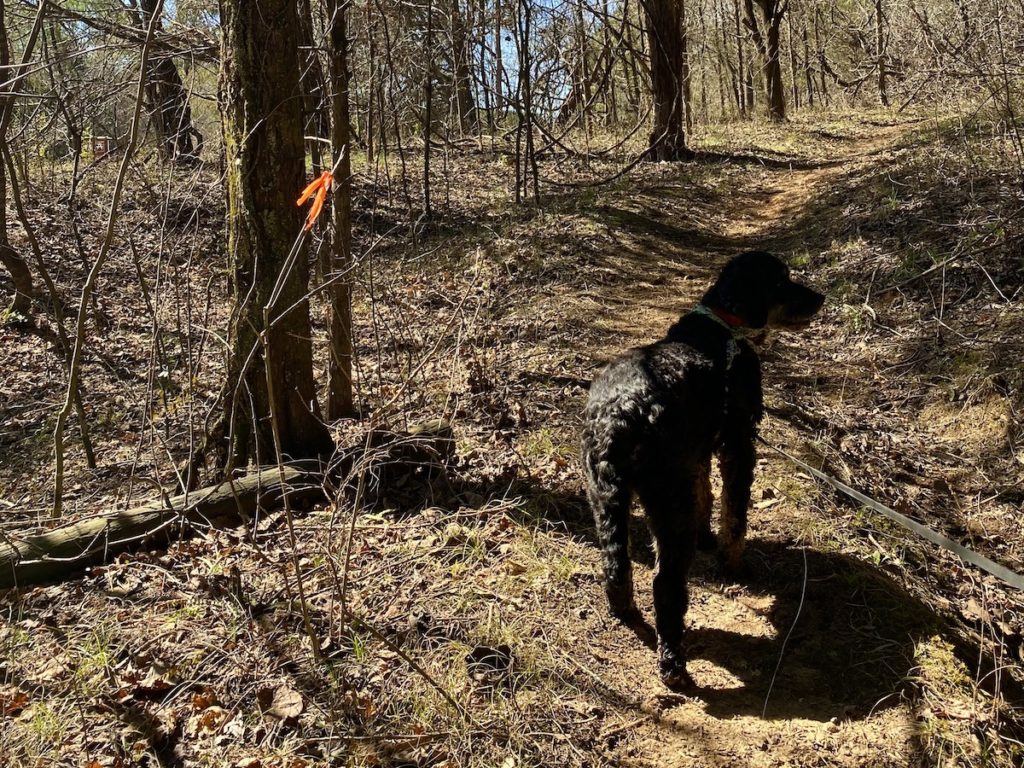
NOT Trail Markers:
A perfect example of a sometimes trail marker are these little neon-colored strips of plastic tied to trees, branches, fences, posts, and/or blowing around aimlessly on the ground. Sometimes plastic strips can be found as path markers high up in the branches or wrapped around trees, especially on trails that see a lot of snow. However, you may sometimes notice, you’ve been following a trail with these obvious blue paint blazes on the trees (great navigation job, Sis). Suddenly there are orange plastic tapes on the trees to your right. These, my friend, are not trail markers. Repeat: Not trail markers! Often these are property line markers, especially seen if a trail weaves in and out of private property. Pay attention to these, especially if you are running, minding your own business, near private property, during deer season! (Perhaps, a story for another time.) Needless to say, stay on the trail, avoid crossing into privately owned property, and as always safety first.
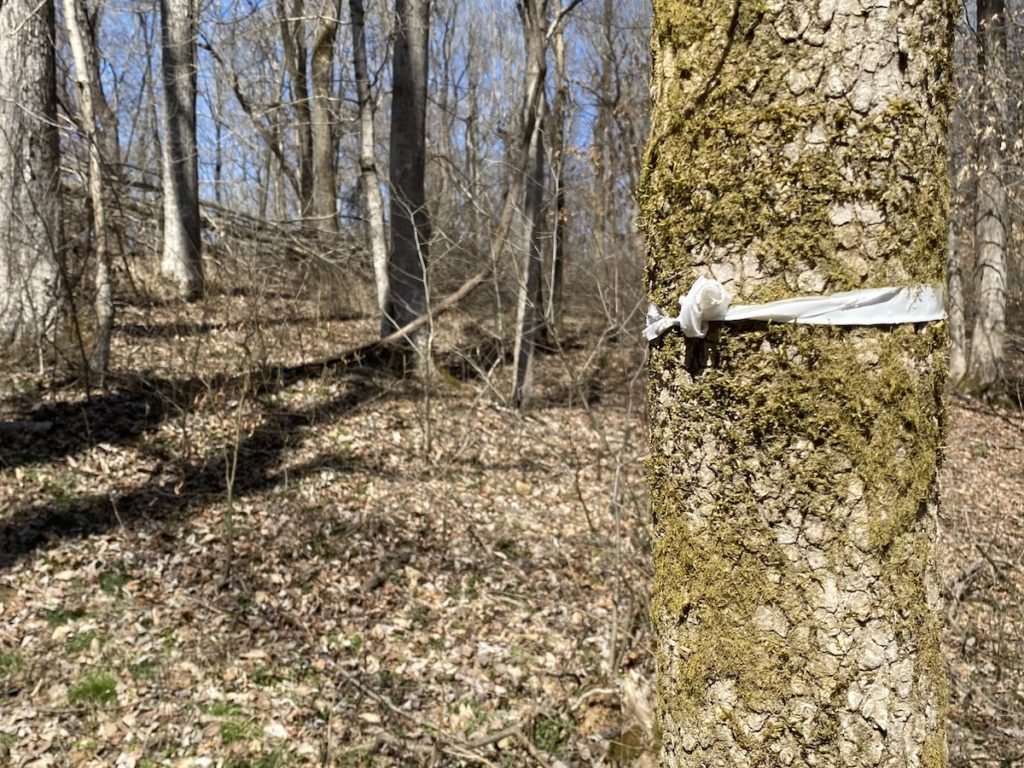
Hope some of that helps you navigate your way. I know my overly eager fascination with trail markers, pathfinders, and way makers is a little kooky, but I see it as an invitation to explore and be wild. My journey back to the woods, the desert, and the mountains has been one rocky road after another, but I hold so much gratitude for the way makers that have come before me, showing me which way to go when I’ve felt lost. So whether it’s the relief of finding that etched “candle” in a tree when you’ve been wandering for over an hour, or the waypoints, the people in your life you love and trust most, I hope you can feel confident that way markers and way makers are going to show you the way back home.



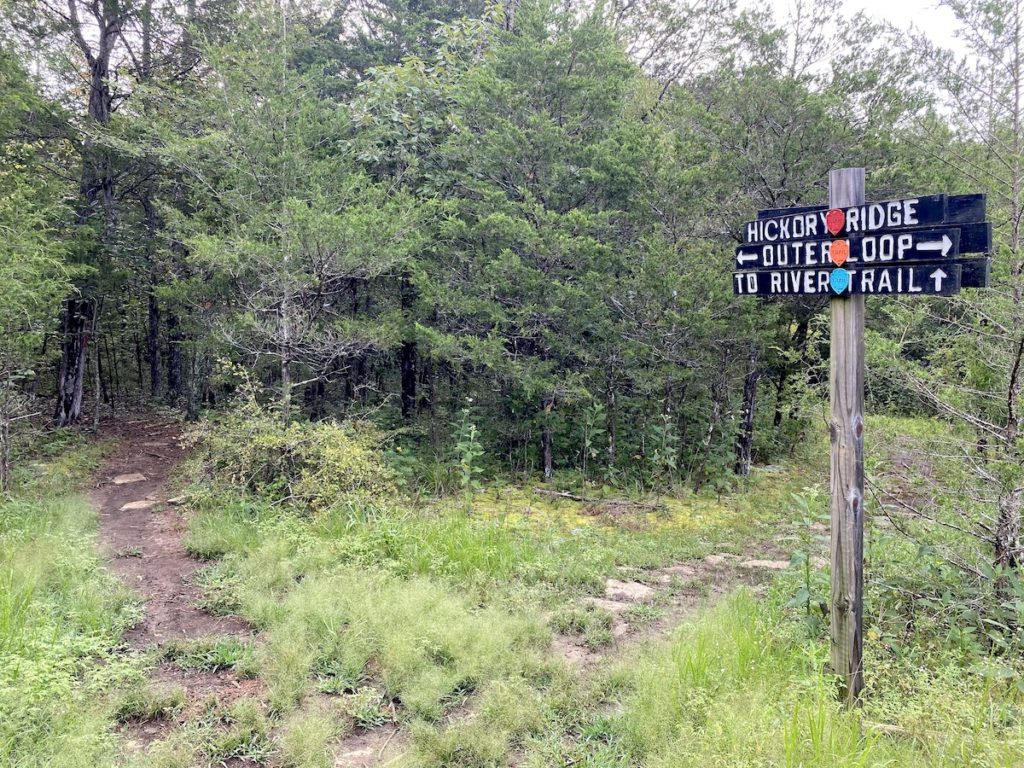
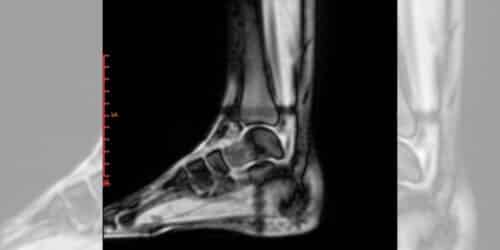










3 Responses
Fascinating and useful. Thanks for sharing this with us!
Hi . Good article . I find marks on trees (big mature oaks ) they could be from ca. 1900 (thats when Mr Howell wrote that he was out there blazing trees ). So my question is , what is the meaning of an apprx 10″ to 12″ horizontal cut mark on an oak tree , 8 feet off the ground . It is not a natural occurrence ; i can see that the mark was made by 3 hatchet strikes forming one continuous horiz line ) .Im sure he could get a boost from a friend , he liked to hike w buddies; but what is the mark for ? Why place it so high ? I see other marks along his route that have the same look but are only 2-3 ft off the ground ; diff being, they are on straight portions of trail and the odd mark is at a turn . My best guess . Sorry so long but im eager to learn about this . Is there a resource showing antique blaze marks ? Google is not helping me much . Thanks 😊😊⛰️⛰️🌳🌳
Thank you! Newbie here. Got lost on my second hike. This could have ended disastrously, but my dog and I pushed through the woods and found a road. I got a ride from two strangers in a van who knew the area and found my car. And now I know the blue markers I was following were property markers, NOT trail blazes. I really appreciate this article.